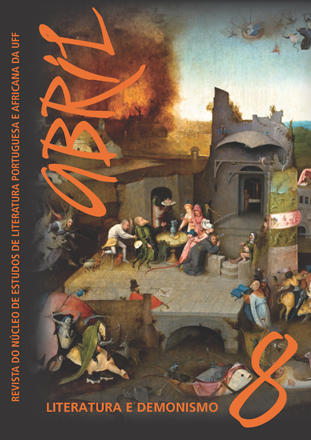Eça de Queirós’ Mephistopheles
DOI:
https://doi.org/10.22409/abriluff.v4i8.29724Keywords:
Eça de Queirós, “Mephistopheles”, DevilAbstract
The chronicle named “Mephistopheles” was written by Eça de Queirós in 1867 and published in the same year at the Gazeta de Portugal newspaper. This text is part of the Prosas bárbaras volume posthumously published in 1903 with some of Eça´s first works. All the narrative from the chronicle is centered in the analysis of the opera Fausto, composed by Charles Gounod in 1859 (which was based in Goethe homonymous work). By the main character of the opera, Mephistopheles, the chronicler places the devil figure with positive characteristics that overcome the bad ones presented. It is noticed, in this discourse, the exaltation of the human characteristics in the devil, and at the same time, the lowering of the ones that are from the celestial level and from the moral and ethical discourse of the religious tradition. We intend to demonstrate that in this chronicle, Eça de Queirós already exposes some particularities from the demonic figure that will remain in many of his demonic characters.
Downloads
Downloads
Published
How to Cite
Issue
Section
License
I authorize the journal Abril - NEPA/UFF to publish the paper of my authorship/responsibility that I now submit, in case it is accepted for online publication.
Moreover, I declare that this contribution is original, that it was not submitted to any other editor for publication, and I sign the present declaration attesting the truth of all its contents.
The copyright of the works published at the virtual space of the journal Abril - NEPA/UFF are automatically entitled to the journal. Their total or partial reproduction is conditioned to the authors' citations and publication data.

Abril is licensed under a Creative Commons - Attribution-NonCommercial 4.0 International (CC BY-NC 4.0).









